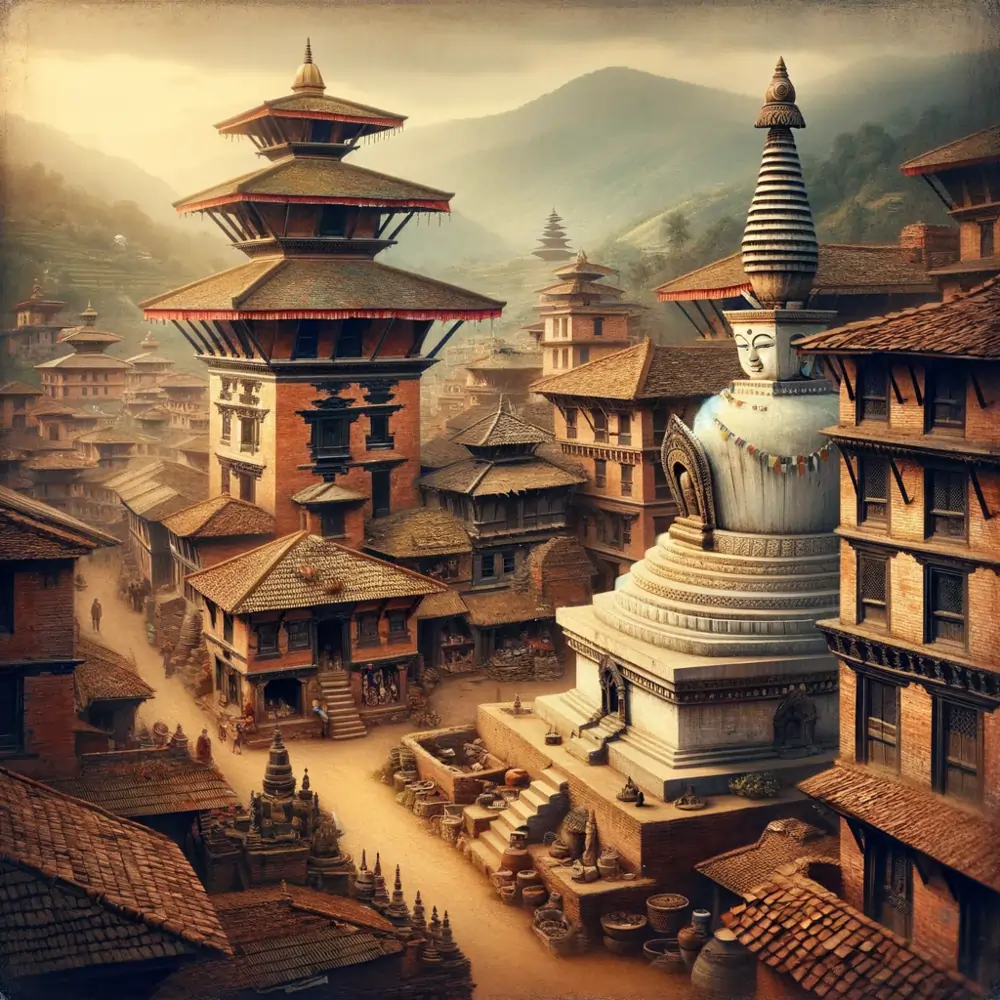Introduction
In this article, Newar Buddhism exclusively means the Bajracharya Tradition. The distinctive feature of Newar Buddhism made it popular outside Nepal. People from other parts of the world are getting attracted to Kathmandu Valley and it is being developed as the pilgrimage center of Bajracharya Buddhism. The followers of Newar Buddhism believe in five Tathgatas: Akshobhya, Ratnasambhava, Vairochana, Amitābha, and Amoghasiddhi. They are well known in the ritual aspect of Buddhism some of the features are traced in this article.
Tathagata Buddhas and Buddhist practices
The Tathagata Buddhas are the abstract aspect of Buddhahood. It means an emanated form of Adibuddha as Buddhas in meditation. They are a part of Jina, which symbolizes the conquest of the material self. Thus, their sangha is known as Jina Sangha.
These Tathagata Buddhas are shown in the seated form and are also part of the psychocosmological system which is developed by the Vajrayana tradition popularly known as Buddhism of Nepal. The fact that each Dhyani Buddha symbolizes a negative element of our mental make-up. It reflects among other things, the basic Vajrayana belief in unity of opposites based on the principle that the awareness of an evil tendency is tantamount to its transformation into a positive unit.
The Adhibuddhas symbolize the reality in the following features:
- Newar Buddhists realized that the Buddha is the teachings of Dharma including Nava Sutras and other Mahayana Sutras along with Tantra and other Buddhist Scriptures.
- Jina-Sangha as a Sangha of tathagata Boddisatva & sangha members as household monks. They are the Disciples of Sangha and they are Shakya and Bajracharyas.
- Newar Buddhism is led by Bajracharyas having Bajravishekha initiation.
- During Prabrajya Sambar (Buddhist ordination), the new members of Jina Sangha used to wear red color robes.
- Newar Buddhists respect the eldest members of Bahal as a Chakresvar and the eldest among all Chakresvaras as the Mul Chakresvar (Dethayepa).
- Newar Buddhism clearly defines hierarchies such as Vajracharyas (as the Priest). Shakyas (as the Co-leader, next to the priest) and other followers.
- There is a need to be a holy monk (leaving the house) to go through the Paramarth Satya and the enlightenment.
- The main characteristic features are to practice Kriya, Charya, Yoga, and Boddhisatva charyas.
- The household monks hold De Acharya Guthi, Puin Acharya Guthi, Vihar Pujas, and other similar rituals annually as national to the local level councils.
- Newar Buddhists practice Yoga, Charya, Kriya, and Dhyan within their own Bahal as being the household monks as mentioned below:
- Kriya Tantras are practiced as Samskar based on Vasudharnama & Panchrakchya Dharani.
- Charya Tantra is practiced based on Maha Vairocan Tantra.
- Yoga Tantra is practiced with Yogavyash based on Tatwa Sangraha and Sarba Parisodhan Tantra.
- Yoganuttara tantra is practiced based on Chakra Sambar Tantra, Hey Bajra Tantra, Chatuspithtantra, Kalchakra Tantra, and the Namasangitte, etc.
Newar Buddhists believe the Vajrayana tradition, leads to the path of transformation on advanced bodhisattva principles, the doctrine of great bliss and emptiness to taught to attain the state of Buddahood.
Origination of Newar Buddhism
So far as the evidence is concerned there are historical evidences to support the origin of Newar Buddhism and trace history accurately. The following points support the historical aspect of Newar Buddhism
- As inscribed in Gokarna Abhilekha by the king Srayenseverma” ……Vajrayana” “…….Buddhivi”, …..Bhu Chaitya Bhatta……” ” Grihalankal ko Bhoot” proves the existence of Vajrayana in the earlier Lichhavi period which is also supported by mentioning Bajrabhairab in the Gorkha inscription dated saka Sambat 122.
- The discovery made of Avalokitesvar image of Lumbini in 1935 A.D shows that Vajrayana philosophy developed during the first century AD.
- According to the Rakta Varna Charya composed by Wak Bajra Bajracharya (550 AD), Hevajra Tantra composed by Padma Vajra (693 AD) and other unpublished charya manuscripts prove that Tantrik Vajrayana was highly developed during the first century AD.
- Bal Chandra Sharma mentioned that the Hevajra Tankra composed by Padma Vajra was the summary of the original Hevajra Tantra composed by Manju Devacharya. This period is Buddha’s life.
Vajrayana Practices & Limitations of Tantra-Mantra
The practices of the Highest Yoga Tantra are not permitted for everybody. It is said that the practice of Tantra-Mantra by those who, land prescribed qualification is said to be extremely dangerous. Only qualified persons could practice it because there are so many Tantras at different levels.
Ritual feature of Newar Buddhism
The Newar Buddhists must perform prescribed ritual practices. Those practices are known as Dasakarma as rituals such as,
- Garbadhan
- Punsavan
- Simantonayena
- TatKarma
- Namakaran
- Annaprasana
- Chudakaran (Buddhist ordination)
- Silpradan
- Vratamochyan
- Panigrahan
Conclusion
Generally, Newar Buddhism is confirmed within the Newar community, and it survived. Fairly intact, preserving religious practices secret Mantra, Tantra, Yoga, and ritual practices with Buddhists even maintained the language of Buddhist texts in original Buddhist Sanskrit.
Similarly, the teacher-disciple relations are continued among the Buddhist uninterrupted.
Newar Buddhism established the authenticity of sacred places such as Bahals and Bahils, which became the places of pilgrims not only for themselves but also for global pilgrims and scholars.
Bahals and Bahils tradition of Newar Buddhism is the community (Sangha) based lineage system, whereas the Tibetan lineage system is different from it. Though Newar Buddhism (Vajrayana), in the Newar context, became a closed system, no longer accessible to anyone outside the Vihara community for higher practices. Because of that, Newar Buddhism had not been properly spreading in today’s world in comparison to Tibetan & Chinese Buddhism. It also happened because Newar Buddhists have not been brought up with such awareness of their own “Identity” nor it has yet been revealed their identity to the outside world by Newar Buddhists. Coming at the end, Newar Buddhists must be encouraged to give liveliness of Newar Buddhism and must be aware of the rich experiences and practices of our religion and cultures along with distinctive features.

